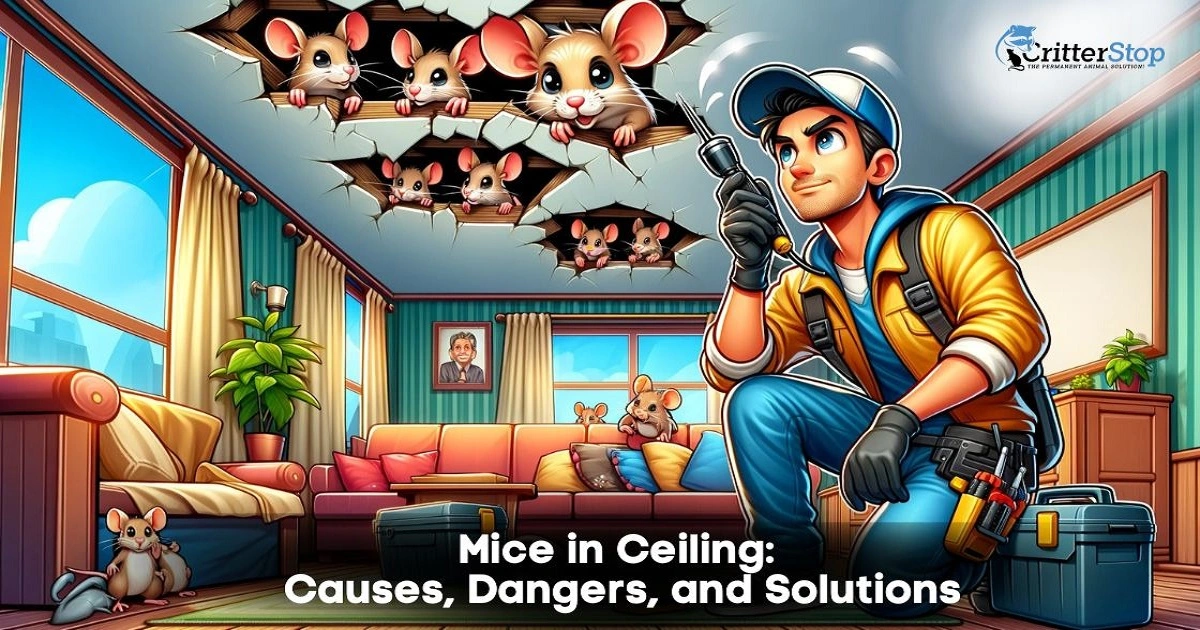
Mice in ceiling is a common problem for homeowners and renters alike. These small rodents cause plenty of damage to a property and be a health hazard. The sound of mice prancing around the ceiling can be unsettling and keep people awake at night.
Mice are attracted to small cracks and holes in the walls and ceilings, and once inside, they can quickly multiply. To homes because they provide warmth, shelter, and a source of food. They can enter through Mice and chew through electrical wires and insulation, causing costly damage. In addition, mice carry diseases and parasites that harm humans and pets.
If you suspect mice are in your ceiling, taking action as soon as possible is important. Ignoring this situation leads to more damage and makes it more difficult to get rid of the mice. In the following article, we explore the signs of a mouse infestation, the risks associated with mice in the ceiling, and the steps you can take to get rid of them.
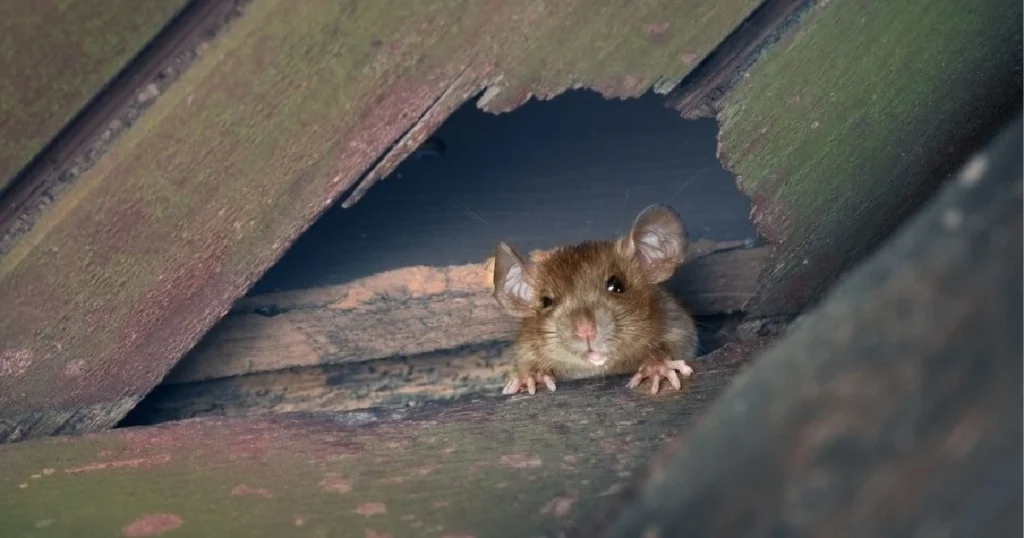
If you suspect mice are in your ceiling, knowing where they are as soon as possible is important. This will give you an advantage to take the steps required to get rid of them before they cause any damage to your home. Here are some of the signs to look out for:
Mice are nocturnal animals, so you are likelier to hear them at night. Here are some sounds that may indicate that you have mice in your ceiling:
If you suspect mice in your ceiling, take action immediately. Many methods exist for getting rid of mice, including traps, poison, and natural repellents. Consult with a pest control professional to determine your situation's best course of action.

Mice are known to be sneaky creatures that can easily find their way into homes and buildings. Their small and agile bodies make it easy for them to enter through small cracks and openings. Understanding their behavior can help homeowners prevent mice from entering their homes and nesting in their ceilings.
Mice enter ceilings for various reasons, they crawl spaces seeking shelter and food. Ceilings provide a warm and safe place for mice to nest and breed. They can also easily access food sources in the kitchen or pantry through the ceiling. Mice chew through wires, insulation, and other materials in the ceiling, causing damage to the home.
Mice are social creatures that prefer to live in groups. They build their nests in warm and protected areas, such as ceilings, attics, and walls. Mice nests are made of soft materials, such as paper, cloth, cotton balls, and insulation. They also use materials to create tunnels and pathways in the ceiling.
Homeowners can use a snap trap or call a professional pest control service to remove mice from the ceiling. However, you can avoid a mouse infestation by preventing mice from entering the home. Sealing all cracks and openings in the home, storing food in sealed containers, and keeping a clean, clutter-free house can help prevent mice from entering the home.
In conclusion, understanding mice behavior is crucial for preventing mice from entering and nesting in the ceiling. Homeowners should take proactive measures to deter mice from entering the home and seek professional help if necessary.
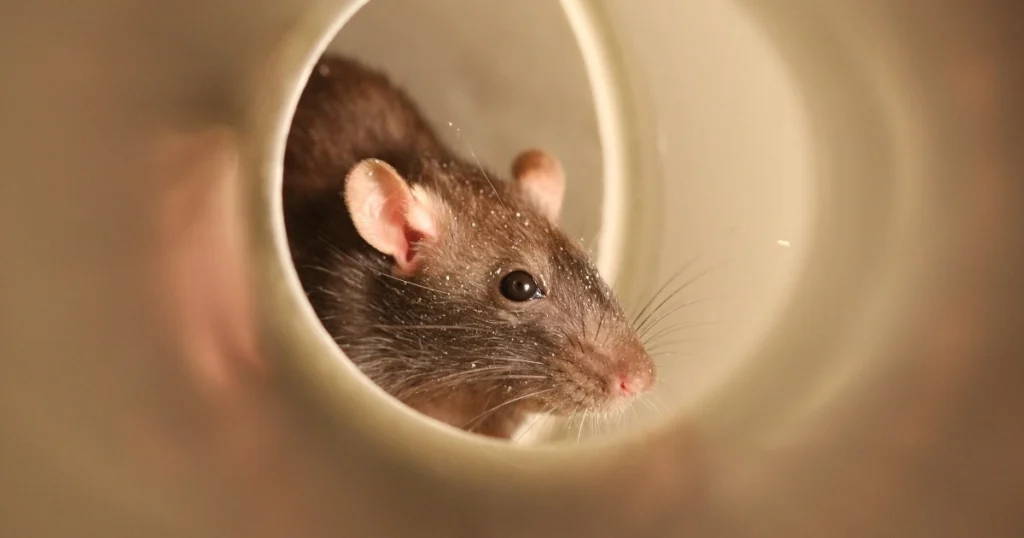
Mice in the ceiling can be a nuisance and can cause damage to the property. Taking preventive action is hwo you avoid this problem. Here are some effective ways to prevent mice from entering the ceiling.
Mice can enter the ceiling through small gaps and holes in the walls and ceilings. Pest control companies can identify and seal these entry points in an effective way to prevent mice from getting into the ceiling. Here are some tips to seal the entry points:
Mice are attracted to food and shelter. Once you have control of the environment, it’s possible to prevent mice from entering the ceiling. Here are some tips for environmental controls:
Following these preventive measures can prevent mice infestations in the ceiling. Acting immediately is important to prevent your mouse problem from worsening. If mice are already in the ceiling, they must be removed before the entry points are sealed to prevent trapping them inside.
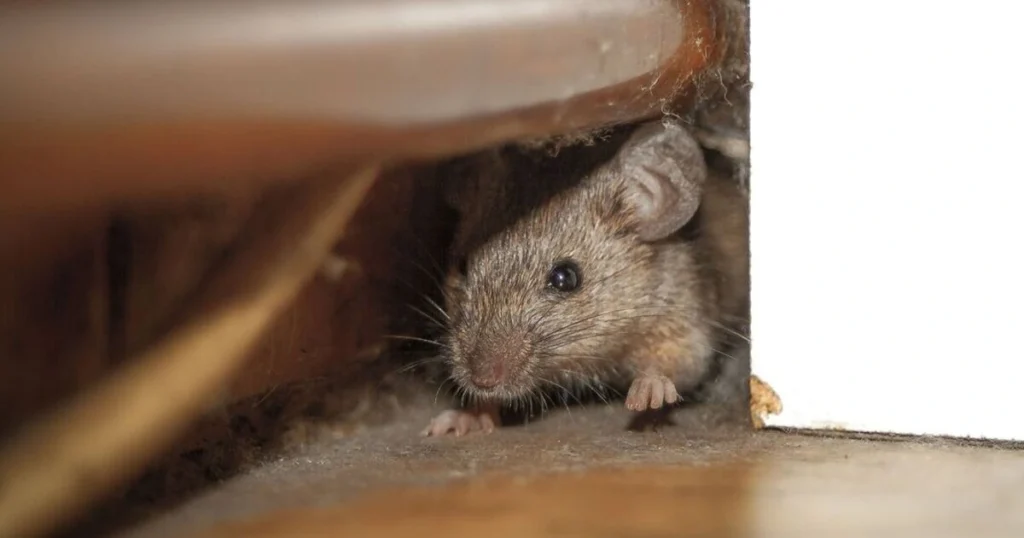
Traps and baits are the most common and effective ways to get rid of mice in the ceiling. Different types of traps and baits are available on the market and used by the pest control industry, and choosing the right one will always depend on the severity of the infestation.
Snap traps are a traditional and widely used type of trap. They work by snapping shut when a mouse triggers the trap, killing it instantly. Sticky traps are another option, which uses a sticky surface to trap the mouse. However, these traps are considered inhumane by some people as the mouse can suffer for hours before dying.
Baits are another effective way to get rid of mice. They work by attracting the mouse to eat the bait laced with poison. The mouse then dies after consuming the bait. However, it is important to use baits with caution, especially if you have pets or children in the house.
If you still wonder how to get mice out of your ceiling, you may need to call a professional exterminator. They have the knowledge, skills, and equipment to eliminate the mice effectively.
Professional exterminators use rodent deterrents, including traps, baits, and fumigation. They also identify and seal any entry points to prevent future infestations and get rid of mice in ceiling.
However, professional extermination can be expensive, and choosing a reputable and experienced exterminator is important to ensure that the problem is properly addressed.
Overall, getting rid of mice in the ceiling can be a challenge, but it can be done as long as the right techniques and tools are used. Whether choosing traps and baits or calling in a professional, acting as soon as possible is important to prevent the infestation from worsening.

When dealing with mice in ceiling, it is common to encounter difficult or impossible to access areas. This can make it challenging to effectively eliminate mice and prevent them from returning. However, some strategies can be used to address these no-access scenarios.
One option for handling inaccessible areas is to use bait stations. These are small, enclosed containers that hold bait, such as poison or food, that are attractive to mice. Bait stations can be placed where mice are likely to transit, such as walls or entry points. Because the bait is enclosed within the station, it is less likely to be accessed by pets or children.
Another approach is to use exclusion methods. This involves sealing off entry points and other areas where mice may gain access to the ceiling. For example, holes or gaps in walls, floors, or ceilings can be filled with caulk or other sealants to prevent mice from entering. This can be time-consuming, but it can prevent mice from returning to the ceiling.
Calling a professional pest control company may be necessary if neither option exists. Pest control professionals use specialized equipment and techniques that can address even the most challenging no-access scenarios. They also offer ongoing monitoring and maintenance to ensure that mice do not return to the ceiling.
In summary, handling inaccessible areas when dealing with mouse in the ceiling can be challenging. Still, some strategies can effectively eliminate mice and prevent them from returning. Depending on the specific situation, bait stations, exclusion methods, and professional pest control services can all be effective options.

Proper cleaning and sanitation measures are important to prevent lingering odors when dealing with mice in the ceiling. Here are some tips on effectively cleaning and sanitizing your space after a mouse infestation.
After eliminating any obvious symptoms of mice, it is essential to disinfect the problematic region thoroughly. A bleach solution or another disinfectant spray might accomplish this task. Wear gloves and a mask to protect yourself from potential health risks.
A bleach solution is created by combining one part bleach with nine parts water. The solution should be applied to the affected region using either a spray bottle or a cloth. It should be let sit for at least ten minutes before being removed with a clean cloth.
Additionally, it is essential to clean and sanitize any items that may have come into contact with the mice, such as clothing or bedding, and the surfaces that have been previously exposed to them. It is recommended that these products be washed in hot water and detergent and then dried using the maximum available heat setting.
Consistent cleaning and sanitation methods can help prevent future infestations and maintain a clean and healthy environment in your space. Ensuring that all potential access sites are sealed is important to prevent mice from returning. Additionally, it is a good idea to consider utilizing mouse traps or other deterrents to keep mice away.
Once the mice are removed from the ceiling, it's time to assess the damage they caused. Mice can cause significant damage to the ceiling, including chewing through wires and insulation, leaving behind urine and feces, and creating holes and cracks.
To repair the damage, cleaning the area thoroughly to remove any remaining urine and feces is important. This can be done using a disinfectant and a vacuum cleaner with a HEPA filter.
Next, any damaged insulation or wiring must be replaced. A licensed electrician or HVAC technician should do this to ensure safety and proper installation.
A patching compound can fill in the gaps for holes and cracks in the ceiling. It is important to ensure the compound is dry before painting or applying other finishing touches.
There are situations when the damage may be too extensive to be repaired, and replacing the ceiling entirely and starting over may be essential. Although this may be time-consuming and expensive, ensuring that the building is safe and its structural integrity is maintained is essential.
Sealing any entry points that mice might utilize to access the ceiling is a crucial step to prevent ongoing infestations. These can include spaces around vents, pipelines, and electrical outlets, among other things. A professional pest control company can help identify and seal these access spots.
Overall, repairing and restoring a ceiling damaged by mice requires a thorough cleaning and assessment of the damage, followed by proper repairs and prevention methods to ensure a safe and healthy environment.
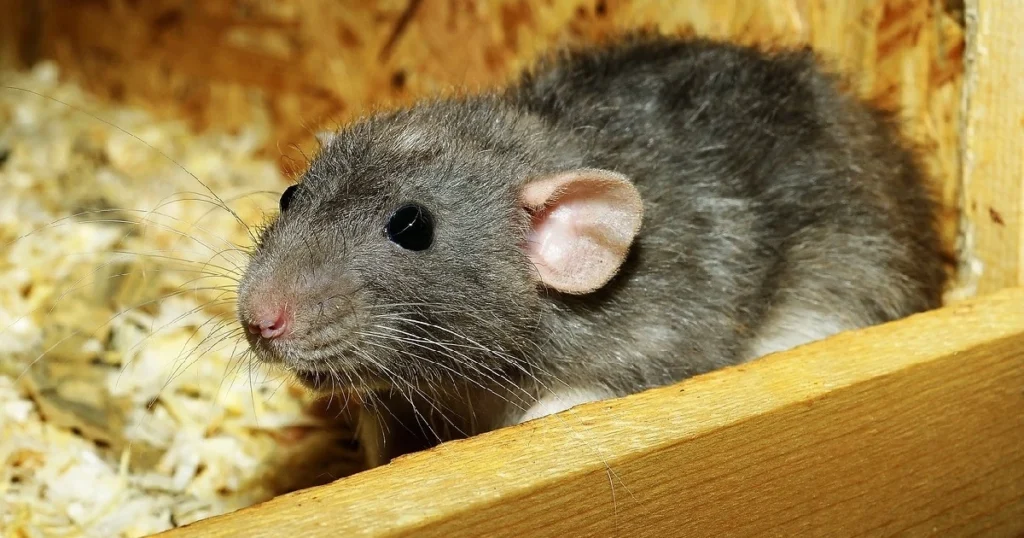
Once the mice have been removed from the ceiling, steps must be taken to prevent them from returning. Ongoing monitoring and maintenance are necessary to ensure the problem does not recur.
One effective monitoring method is to set up traps in the areas where the mice were previously active. This will allow you to quickly identify any new activity and take action before the problem becomes more severe.
In addition to traps, it is also important to seal up any entry points the mice may have used to gain access to the ceiling. Materials such as steel wool or expanding foam can be used for this.
Regular cleaning and sanitation of the area can also help to prevent mice from returning. This includes removing any food sources and keeping the area free of clutter.
For ongoing monitoring and maintenance, you should contact a professional wildlife removal company, such as Critter Stop. Critter Stop has a fantastic reputation, and customer reviews online because it provides high-quality work and great customer service. Contact Critter Stop at (214) 234-2616 for a free inspection to solve your problem with mice removal from your property.
The most common way to detect mice in the ceiling is by listening to scratching or scampering sounds. Mice are most active at night, so you can try listening to these sounds during the evening or early morning. You may also notice droppings or urine stains on the ceiling or floor below.
The best way to eliminate mice in the ceiling is to locate their entry point and seal it off. You can then use traps or bait to capture or kill the mice. It is important to dispose of any dead mice properly and to clean up any droppings or urine stains to prevent the spread of disease.
The most effective methods for removing mice in the ceiling are sealing off entry points, using traps or bait, and cleaning up any droppings or urine stains. Maintaining good hygiene and storing food in airtight containers is also important to prevent attracting mice.
You may need to cut a hole to gain access without direct access to the ceiling. Alternatively, you can use traps or bait near the suspected entry point and wait for the mice to come out.
Scratching sounds in the ceiling are a common sign of a mice infestation. Mice climb walls and enter homes through small openings, such as gaps around pipes or vents.
Yes, mice can be in the ceiling but not in other parts of the home. Mice climb walls and enter homes through small openings, such as gaps around pipes or vents.
Common signs of a mice infestation in the ceiling include scratching or scampering sounds, droppings or urine stains on the ceiling or floor below, and gnaw marks on wires or insulation.
Yes, mice can chew through ceiling materials, such as drywall or insulation. To prevent this, it is important to seal off any entry points and use materials less attractive to mice, such as metal or concrete.
Upon hearing mice in the roof, locating the entry point and sealing it off is important. You can then use traps or bait to capture or kill the mice. It is also important to clean up droppings or urine stains to prevent the spread of disease.
Visit our Critter Library and learn more about our furry friends